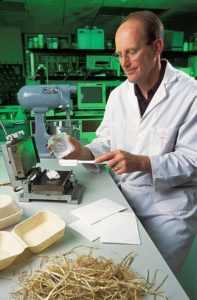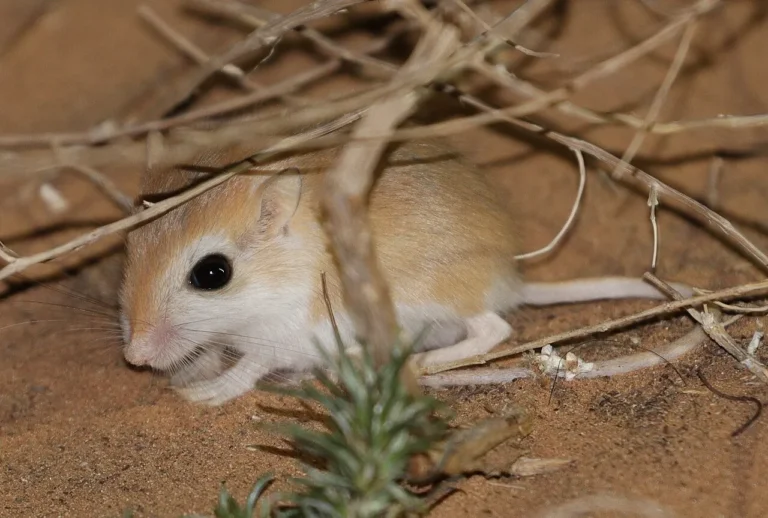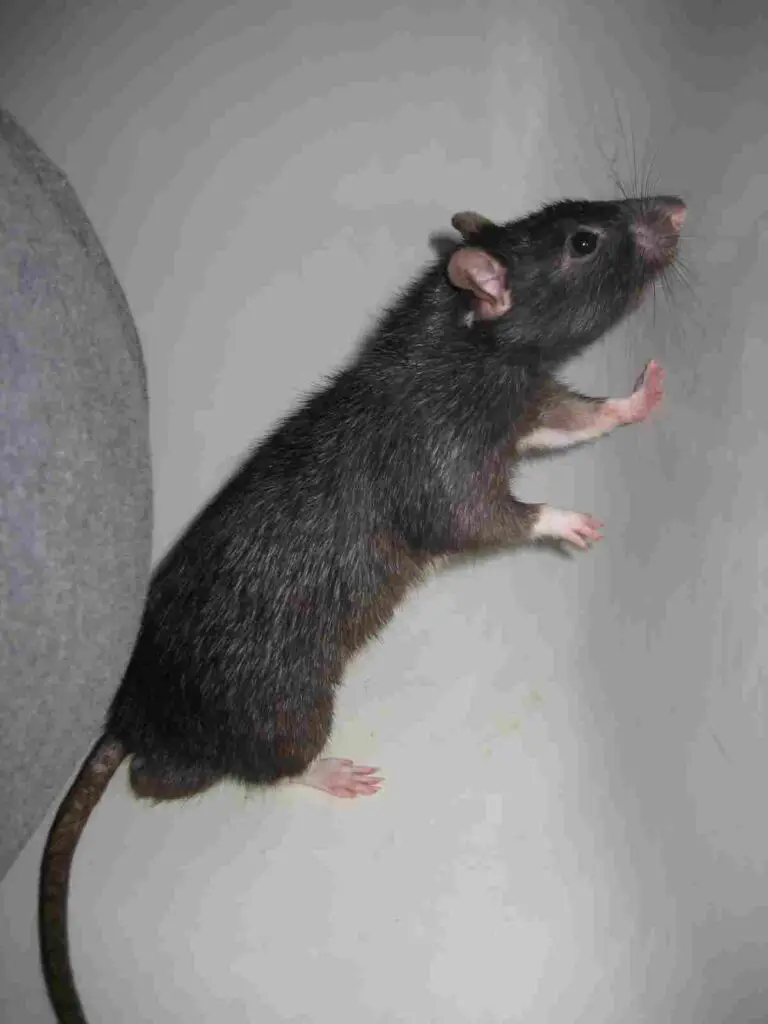16 Advantages and Disadvantages of Biodegradable Plastics
Advantages and disadvantages of biodegradable plastics are; natural recycling, small carbon footprint, low energy demand, minimal waste generation, renewable manufacturing, waste-to-energy application, controllable biodegradation, sustainability, resource conservation (advantages); capital cost, marine pollution, complexity, chemical contamination (disadvantages).
The plastics can be described as polymeric materials that are capable of undergoing biodegradation and decomposition like organic biomass, to produce simpler compounds like carbon dioxide and water.
Although they are not always organic, some of these plastics are produced from bio-based raw materials like starch and cellulose. Such biodegradable plastics are specifically referred to as bioplastics [14].
In this article, the advantages and disadvantages of biodegradable plastics are discussed extensively, based on the following outline;
-Advantages (Pros) of Biodegradable Plastics
-Disadvantages (Cons) of Biodegradable Plastics
Advantages (Pros) of Biodegradable Plastics
1). Can be Naturally Recycled
Because biodegradable plastics can undergo decomposition, they are returned to the environment and the ecosystem at faster rate than other types of plastics [12].
This can be viewed as a natural form of recycling, since it involves the breakdown and conversion of the plastic into simpler compounds which may then be reabsorbed as nutrients by the soil, or as gases by the atmosphere.
Natural recycling is an eco-friendly process because it is usually the result of activities of naturally-occurring microorganisms like bacteria and fungi.
The occurrence of biodegradation does not have any significant effect on the equilibrium state of the Earth, unlike manmade treatment methods like incineration, which can cause greenhouse gas emission and environmental degradation.
Although it is not common practice, biodegradable plastics can also be recycled artificially, like traditional plastics. Their decomposable characteristics makes it possible for this to be achieved using relatively simple biochemical and organic regeneration mechanisms [9].
While all plastics can decompose, biodegradable plastics may take a minimum of 12 weeks, and a maximum of few years to breakdown completely. This is much faster than traditional plastics which may take over a hundred years to completely decompose.
It implies that the risk of long-term pollution by biodegradable plastics is generally less than that which is posed by traditional plastics.
2). Biodegradable Plastics Reduce the Carbon Footprint of the Plastic Industry
With the growing concerns regarding climate change and global warming, biodegradable plastics can be viewed as a relatively good option for the manufacturing industry.
From the point of production to disposal and degradation, biodegradable plastics are believed to release less carbon dioxide and overall greenhouse emissions, than traditional plastics [2].
One of the reasons for this is the fact that biodegradable plastics are often composed of bio-based materials, in contrast to petroleum-based materials used to manufacture most traditional plastics.
The exclusion of petroleum derivatives from the manufacturing process for plastics, reduces the amount of greenhouse gases which is likely to be released.
Reducing the carbon footprint of the plastic industry is especially important as the rate of plastic production increases.
Given the ability of biodegradable plastics to be recycled naturally in the ecosystem, the net amount of carbon dioxide released during the lifecycle of these materials is likely to be less than that released by traditional plastics.
3). Less Energy-Intensive to Manufacture
Another advantage of biodegradable plastics is energy conservation.
Because the manufacture of biodegradable plastics is a relatively simple process involving less complex raw materials and catalysts, it requires less energy than traditional plastic manufacturing.
In the same vein, recycling biodegradable plastics is a generally simpler task than manufacturing traditional plastics. It therefore requires less energy.
Energy conservation is a huge advantage because it reduces the cost and environmental impact of manufacturing and recycling plastics.
4). Minimal Waste Generation
Plastics make up more than 10% of municipal solid waste (MSW) on Earth [1].
Biodegradable plastics suggest a possibility of reducing the challenge of waste management that is posed by plastics.
Because these materials are capable of decomposing within a relatively short period of time, they can be returned to the soil as nutrients through biodegradation, thereby reducing the volume of municipal waste in landfills and other waste management facilities.
By reducing the volume of waste, land resources can be conserved as well. Less demand for waste management facilities will spare land for other purposes, such as agriculture. The degree of environmental degradation by waste will also be reduced.
5). Biodegradable Plastics Encourage Renewable Manufacturing
Some biodegradable plastics are made from biomass, or bio-based organic materials like lignin, cellulose, starch and bioethanol [3].
These plastics are a subcategory (of biodegradable plastics) known as bioplastics, and they constitute a significant portion of the biodegradable plastic market.
Because organic materials are recycled in nature, the raw materials used to manufacture bioplastics can be described as renewable resources.
Utilization of renewable resources in the manufacturing industry is a vital step toward achieving a circular economy. It is capable of reducing the overall cost and environmental implication of manufacturing.
6). Can be Used in Place of Traditional Plastics
The pace of research and development with respect to biodegradable plastics has led to some significant improvements in the durability and general quality of these materials.
As a result, biodegradable plastics are increasingly becoming as durable and versatile as traditional plastics.
Some of the recent improvements have altered the composition of biodegradable plastics to include some synthetic polymers that are found in traditional plastics.
The outcome of these changes is a set of biodegradable plastics that can replace traditional ones in various applications.

7). Biodegradable Plastics can be used for Waste-to-Energy Applications
Waste-to-energy applications have to do with the conversion of waste to renewable energy which can be used for heating, cogeneration and electricity generation [13].
This conversion usually occurs in the process ofenvironmental remediation and waste treatment, and may be achieved through any of various methods, such as anaerobic digestion, pyrolysis and incineration.
Some biodegradable plastics can be effectively disposed through composting, which can produce fertilizer for agricultural purposes [7].
8). Decomposition of Biodegradable Plastics Can be Controlled
The chemical composition of most biodegradable plastics is such that these plastics are able to decompose under a set of specific conditions, or through definite decomposition pathways [5].
Examples of such plastics are the oxo- and hydro- biodegradable plastics, which can degrade by oxidation and hydrolysis respectively.
This is an advantage as it increases the reliability of these plastics when used to make products.
Specified conditions of biodegradation will help the user to know the best conditions and duration of time to use biodegradable plastics. The same can also be used to evaluate the quality of a biodegradable polymer, based on its decomposition conditions.
9). Sustainable Development and the Circular Economy
The branches of sustainable development are social, environmental and economic [4].
These three areas can be positively affected by the biodegradable plastic industry.
Biodegradable plastics are socially acceptable for their compatibility with the ecosystem. This factor of social acceptability may have economic implications as well.
Some studies have suggested a rise in sales and profits for companies after adopting biodegradable plastics into their production and marketing schemes [17]. A similar scenario has also been observed in the export and import sector.
Similarly, we can consider biodegradable plastics to be beneficial to health. This is because they are not known to release any significant amounts of toxins into the environment, as is the case with traditional plastics [10].
Another advantage is the reduction of dependence on petroleum.
Since many types of biodegradable plastics are not made from petroleum-based materials, an increase in the scale of production of these types of plastics can conserve fossil fuels to serve other important purposes like electricity supply.
The biodegradable plastic industry is supportive of a circular economy, as it ensures that renewable natural resources are used in a productive and less-harmful manner.
Lastly, biodegradable plastics can form an export sector of their own. Given the growing awareness with regards to climate change, global warming, environmental degradation and sustainability, demand for eco-friendly products can create more avenue for economic profits.
10). Resource Conservation
Because renewable, bio-based materials can be used to manufacture biodegradable plastics, resources can be conserved through the use of these plastics.
Conservation of resources also occurs because of the demand for relatively-less energy during the manufacture of biodegradable plastics. Through the use renewable raw materials and minimal energy, biodegradable plastic production and usage lead to resource conservation.
Disadvantages (Cons) of Biodegradable Plastics
1). Capital Cost
Generally, the cost of purchasing equipment for the manufacture and recycling of biodegradable plastics, is higher than that of traditional plastics [8].
The reason for this lies in the fact that biodegradable plastics are still in their development stage, and have not proliferated in terms of the availability of products, methods and technologies.
Estimates suggest up to 50% more cost of manufacturing biodegradable plastics [2].
While it is expected that these challenges will diminish as technological advancement occurs, they imply that net profits in the manufacture of biodegradable plastics, are not guaranteed.
2). Biodegradable Plastics may cause Marine Pollution
There are reasons why biodegradable plastics can be a cause of environmental degradation, especially in marine terrains.
One of these is the fact that biodegradable plastics may not always decompose effectively [12].
Seawater conditions are not optimal for the decomposition of biodegradable plastics, because some of the factors like oxygen, temperature and microbes that are required for biodegradation, may be absent.
Also, when biodegradable plastics breakdown, they may become smaller particles called microplastics [15].
These microplastics, when ingested by aquatic organisms like fish, can cause harm to the organisms [6].
3). Specific Biodegradation Conditions can result in Complexities
Biodegradable plastics still pose the risk of pollution, because they do not always breakdown.
There are specific conditions which are required for the degradation of biodegradable plastics. Based on these conditions, they are classified into hydro-biodegradable (decompose by hydrolysis) and oxo-biodegradable (decompose by oxidation) categories.
What this means is that biodegradable plastics may not always be eco-friendly, renewable and sustainable, as they are expected to be. Rather, their decomposition can be affected by environmental and physicochemical conditions like humidity, pH and temperature.
Also, some biodegradable plastics are described as “compostable” and can breakdown effectively only as compost. This brings some complexity to the disposal of such plastics, as they may require a composter to disposed of.
4). Demand for Agricultural Biomass
A subcategory of biodegradable plastics known as “bioplastics” can be made from biomass, in the form of plant products such as starch, chitosan and cellulose [11].
The need for bio-based raw materials may place a strain on natural resources such as water and soil.
In addition to this demand, using agricultural products to manufacture biodegradable plastics may deflect useful resources (land, capital, labor) from the important goal of tackling food insecurity in developing regions.
Given the recent negative impact of global warming and climate change on the agricultural sector, a diversion of agricultural resources from food supply can increase the severity of world hunger and malnutrition.
5). Risk of Chemical Contamination
Because large volumes of bio-based materials are required when manufacturing biodegradable plastics, the crops which serve as a source of these raw materials, often need fertilizer to boost their growth.
Additionally, large-scale cultivation of such crops may involve the use of herbicides and pesticides.
After these chemicals have been applied, they may be absorbed by the crops and become a part of their compositional makeup.
This is a disadvantage, because it poses a risk to the user as well as the environment, when biodegradable plastics are produced from such contaminated raw materials.
Depending on the fate of the product, contaminated bioplastics can cause health hazards for humans and other organisms, as well as environmental degradation in the form of air, soil and water pollution.
6). Confusion of Biodegradable Plastics with Traditional Ones
Because of their physical similarity, biodegradable plastics may sometimes be confused with traditional ones.
This is a problem for various reasons.
One of the reasons is the fact that biodegradable plastics are not suitable for all purposes which traditional plastics can serve. When used in their place, it may lead to poor performance and damage of biodegradable plastics.
At the point of disposal, some problems may also arise when biodegradable plastics are combined with traditional ones.
Firstly, the recycling method for traditional plastics is not generally suitable for biodegradable plastics. If the two types are not segregated before recycling, losses may occur in terms of energy, time, and plastic materials.
When disposed of in landfills, biodegradable plastics decompose to produce methane; a greenhouse gas which is unhealthy for the environment [16].

Conclusion
Advantages and disadvantages of biodegradable plastics are outlined as follows;
Advantages of biodegradable plastics are;
- Can be Naturally Recycled
- Biodegradable Plastics Reduce the Carbon Footprint of the Plastic Industry
- Less Energy-Intensive to Manufacture
- Minimal Waste Generation
- Biodegradable Plastics Encourage Renewable Manufacturing
- Can be Used in Place of Traditional Plastics
- Biodegradable Plastics can be used for Waste-to-Energy Applications
- Decomposition of Biodegradable Plastics Can be Controlled
- Sustainable Development and the Circular Economy
- Resource Conservation
Disadvantages of biodegradable plastics are;
- Capital Cost
- Biodegradable Plastics may cause Marine Pollution
- Specific Biodegradation Conditions can result in Complexities
- Demand for Agricultural Biomass
- Risk of Chemical Contamination
- Confusion of Biodegradable Plastics with Traditional Ones
References
1). Bodzay, B.; Fejős, M.; Bocz, K. B.; Toldy, A.; Ronkay, F.; Marosi, G. (2012). “Upgrading of recycled polypropylene by preparing flame retarded layered composite.” eXPRESS Polymer Letters 6(11):895–902. Available at: https://doi.org/10.3144/expresspolymlett.2012.95. (Accessed 6 May 2022).
2). Cho, R. (2017). “The Truth About Bioplastics.”Available at: https://news.climate.columbia.edu/2017/12/13/the-truth-about-bioplastics/. (Accessed 6 May 2022).
3). de Paula, F. C.; de Paula, C. B.; Contiero, J. (2018). “Prospective Biodegradable Plastics from Biomass Conversion Processes.” In (Ed.), Biofuels – State of Development. IntechOpen. Available at: https://doi.org/10.5772/intechopen.75111. (Accessed 6 May 2022).
4). Duran, D. C.; Gogan, L. M.; Artene, A. E.; Duran, V. (2015). “The Components of Sustainable Development – A Possible Approach.” Procedia Economics and Finance 26:806-811. Available at: https://doi.org/10.1016/S2212-5671(15)00849-7. (Accessed 6 May 2022).
5). Folino, A.; Karageorgiou, A.; Calabrò, P. S.; Komilis, D. P. (2020). “Biodegradation of Wasted Bioplastics in Natural and Industrial Environments: A Review.” Sustainability 12(15):6030, Available at: https://doi.org/10.3390/su12156030. (Accessed 6 May 2022).
6). Franzellitti, S.; Canesi, L.; Auguste, M.; Wathsala, R.; Fabbri, E. (2019). “Microplastic exposure and effects in aquatic organisms: A physiological perspective.” Environmental Toxicology and Pharmacology 68. Available at: https://doi.org/10.1016/j.etap.2019.03.009. (Accessed 6 May 2022).
7). Gioia, C.; Giacobazzi, G.; Vannini, M.; Totaro, G.; Sisti, L.; Colonna, M.; Marchese, P.; Celli, A. (2021). “End of life of biodegradable plastics: composting vs. re/upcycling.” ChemSusChem 14(19). Available at: https://doi.org/10.1002/cssc.202101226. (Accessed 6 May 2022).
8). Horvat, D.; Wydra, S.; Lerch, C. M. (2018). “Modelling and Simulating the Dynamics of the European Demand for Bio-Based Plastics.” International Journal of Simulation Modelling 17(3):419-430. Available at: https://doi.org/10.2507/IJSIMM17(3)435. (Accessed 6 May 2022).
9). McDonald, N. (2019). “Biological Recycling Of Biodegradable Plastics.”Available at: https://www.biocycle.net/biological-recycling-biodegradable-plastics/. (Accessed 6 May 2022).
10). Mroczkowska, M.; Germaine, K. J.; Culliton, D.; Kakoili-Duarte, T.; Neves, A. C. (2021). “Assessment of Biodegradation and Eco-Toxic Properties of Novel Starch and Gelatine Blend Bioplastics.” Recycling 6(4):81. Available at: https://doi.org/10.3390/recycling6040081. (Accessed 6 May 2022).
11). Mutmainna, I.; Tahir, D.; Gareso, P. L.; Ilyas, S. (2019). “Synthesis composite starch-chitosan as biodegradable plastic for food packaging.” Journal of Physics Conference Series 1317:012053. Available at: https://doi.org/10.1088/1742-6596/1317/1/012053. (Accessed 6 May 2022).
12). Song, J. H.; Murphy, R. J.; Naravan, R.; Davies, G. B. H. (2009). “Biodegradable and compostable alternatives to plastics.” Philosophical Transactions of The Royal Society B Biological Sciences 364(1526):2127-3. Available at: https://doi.org/10.1098/rstb.2008.0289. (Accessed 6 May 2022).
13). Sipilä, K. (2016). “Cogeneration, biomass, waste to energy and industrial waste heat for district heating.” Advanced District Heating and Cooling (DHC) Systems (pp.45-73). Available at: https://doi.org/10.1016/B978-1-78242-374-4.00003-3. (Accessed 5 May 2022).
14). Wahyuningtiyas, N. E.; Suryanto, H. (2017). “Analysis of Biodegradation of Bioplastics Made of Cassava Starch.” Journal of Mechanical Engineering Science and Technology 1(1):41-54. Available at: https://doi.org/10.17977/um016v1i12017p024. (Accessed 6 May 2022).
15). Wei, X.; Bohlén, M.; Lindblad, M. C.; Hedenqvist, M. S.; Hakonen, A. (2021). “Microplastics generated from a biodegradable plastic in freshwater and seawater.” Water Research 198(6):117123. Available at: https://doi.org/10.1016/j.watres.2021.117123. (Accessed 6 May 2022).
16). Xochitl, Q.; Del Consuelo, H. M.; Maria, E. R.; Vazquez, A. Krystyjan, M. (2021). “Degradation of Plastics in Simulated Landfill Conditions.” Polymers 2021(13):1014. Available at: https://doi.org/10.3390/polym13071014. (Accessed 6 May 2022).
17). Zhao, X.; Cornish, K.; Vodovotz, Y. (2020). “Narrowing the Gap for Bioplastic Use in Food Packaging: An Update.” Environmental Science and Technology. Available at: https://doi.org/10.1021/acs.est.9b03755. (Accessed 6 April 2022).





